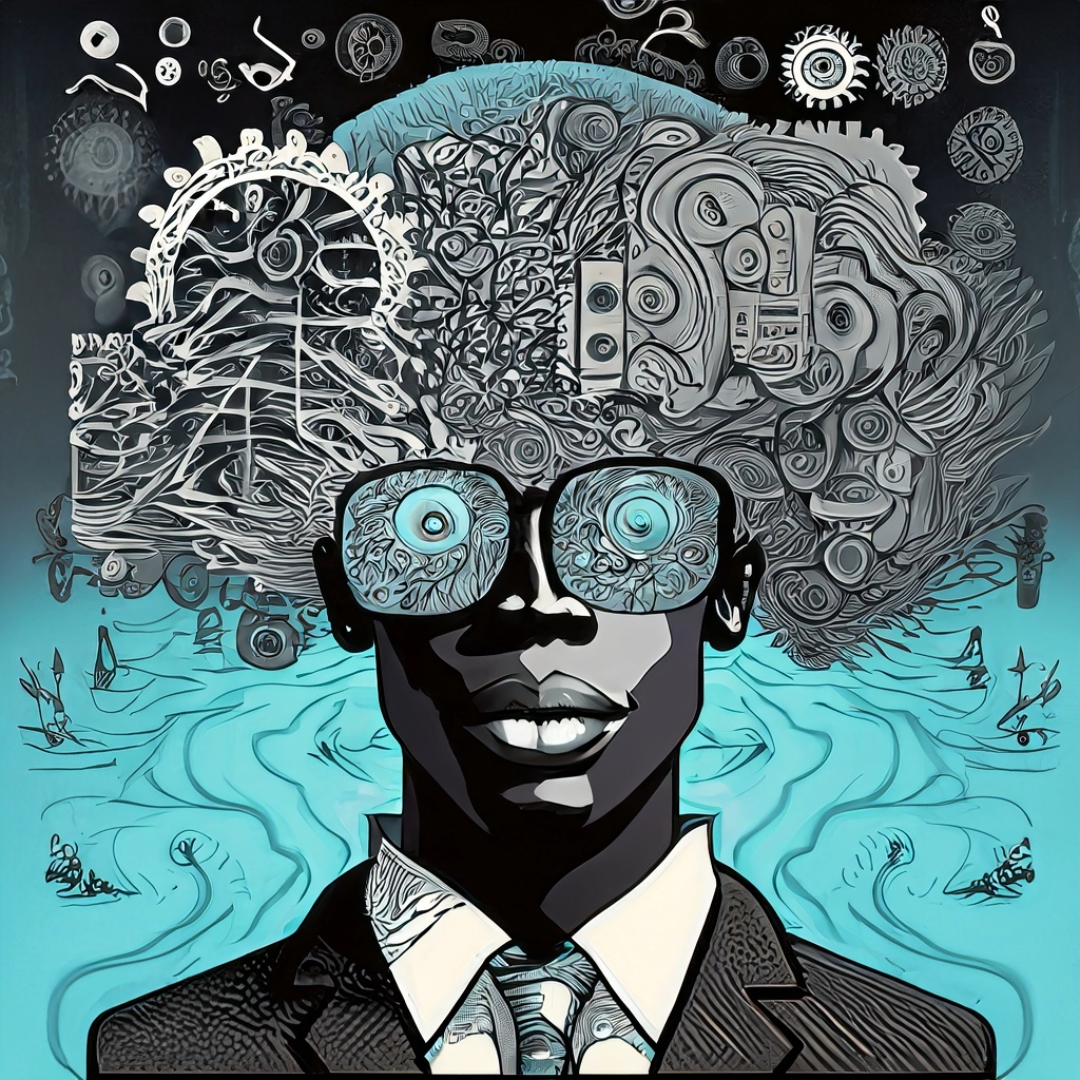Beyond Bias: How Smart Organizations Turn Human Judgment Into Their Greatest Competitive Advantage
In every organisation, the quality of decision-making determines its trajectory. Yet as McKinsey’s recent research makes clear, human bias systematically undermines our ability to make rational choices—costing companies billions in misallocated resources and missed opportunities.
Let me be clear: Most organisations have no idea how to make good decisions. None. They stumble through an ad-hoc process riddled with bias and outdated (last century) thinking that they might as well be using a Magic 8-Ball.
And the worst part? They don’t even know it.
“The most dangerous decision biases aren’t the ones you’re aware of—they’re the ones that feel like objective reality. What if your clearest thinking is actually your most distorted?”
The crucial question is, how do you know it?
The Bias Blindspot: You Can’t See What You Can’t See
The problem with cognitive biases isn’t just that they exist—it’s that our brains are literally wired to hide them from us. Your mind constantly creates a convenient fiction that your decisions are rational, evidence-based, and objective.
They’re not.
What’s really happening is that your brain decides what it wants, then assembles a carefully curated collection of “evidence” to justify the already made decision. The rest gets filtered out or dismissed.

This happens to everyone: me, you, the CEO of the trillion-dollar company, and the entrepreneur who thinks they’re immune to conventional thinking.
The difference is that some organisations have built systems to counteract these invisible forces, while most continue to wonder why their carefully considered decisions continue to produce mediocre results.
The Paradox of Expertise: Why Smart People Make Stupid Decisions
A dangerous assumption underlying most organisations is that expertise leads to better decisions. This is only occasionally true and often wildly false.
Experts are just as vulnerable to bias as everyone else – and sometimes more so. Their specialised knowledge creates blind spots. Their past successes build overconfidence. Their status makes them less likely to be challenged.
This is why the smartest people in the room often make the worst decisions. Their intelligence becomes a liability when it convinces them they can’t possibly be wrong.
The remedy isn’t removing experts from the decision process – it’s building a system where expertise is respected but not revered and where contrary viewpoints aren’t just tolerated but actively sought out.
The Efficiency Trap: Why Your “Streamlined” Process Is Failing You?
Here’s a heretical thought: the more efficient your decision-making process, the more likely it is to fail.
Organisations are obsessed with efficiency. Shorter meetings. Faster reviews. Streamlined processes. Bang! Done! Ready to go! And they’re systematically removing the very friction that leads to better decisions.
Good decision-making requires tension, dialogue, the exchange of ideas, both good and bad, occasional disagreements, debate, and discomfort—the messy human stuff that efficiency consultants try to eliminate. Without creative disagreements and professional differences, you have groupthink and “Yes-Mentality” that prevents innovation and progress.
When you optimise for speed and comfort, you get fast, comfortable decisions. Not good ones. Slow decisions that emerge from productive conflict will outperform fast, friction-free decisions almost every time.
I believe that the new quality comes from creative tension and occasional friction. Synergy resides in our foundational differences, which we jointly set aside for the common objective.
The Courage Gap: Rethinking Risk and Failure
Most organisations don’t suffer from too much risk-taking – they suffer from too little. They’re so focused on avoiding failure that they systematically purge any decision with a hint of uncertainty.
This creates an illusion of prudence while actually increasing risk. Why? Because playing it safe is increasingly the riskiest strategy of all.
“Corporate strategy isn’t made in boardrooms or strategy sessions—it’s made in the uncomfortable silence after someone challenges a CEO’s pet project. The true strategic capability of an organisation can be measured by the length of that silence.”
The market punishes sameness. It rewards distinctiveness. Yet most organisations are structured to eliminate precisely the kind of bold, distinctive choices that create lasting value.
The solution isn’t just “taking more risks” – it’s fundamentally reframing what risk means. It’s building systems where calculated risk-taking is rewarded even when it fails and where the genuine risk – the risk of irrelevance through inaction – is made visible.
If you haven’t had a chance to read McKinsey’s article, please do so. Here are the summarised insights to help you think more critically about the superior decision-making process.
Link to report:
Biases in decision-making: A guide for CFOs by Tim Koller
The Decision-Making Blind Spots That Derail Growth
The most dangerous obstacles aren’t external market forces but internal cognitive failures that go unrecognised:
1. Groupthink: The Harmony Trap
Groupthink occurs when teams prioritise consensus over critical analysis. The data is alarming:
- High-quality debate makes big-between decisions 2.3x more likely to succeed.
- 71% of executives report witnessing the harmful effects of groupthink in strategic meetings
- 65% of failed initiatives show evidence of insufficient challenge from team members
2. Confirmation Bias: Seeing What You Want to See
This is your brain actively filtering evidence to match existing beliefs—a cognitive distortion that manifests as:
- Seeking only supporting data for pre-established hypotheses
- Interpreting ambiguous information to reinforce existing conclusions
- Dismissing contradictory evidence as outliers or exceptions
3. Excessive Optimism: The Planning Fallacy
This bias creates a dangerous disconnect between expectations and reality:
- 84% of capital projects exceed their budgets
- The average cost overrun is 33% across industries.
- Only 37% of digital transformation initiatives meet their stated objectives.
4. Inertia: The Status Quo Stranglehold
Organisational inertia is remarkably persistent:
- Resource allocations across business units correlate at >90% year over year
- Companies in the top third of resource reallocation earn 30% higher TSR annually
- 74% of companies follow previous-year budgets rather than strategic priorities
5. Loss Aversion: The Risk Paralysis
Executives often reject high-value opportunities with acceptable risk profiles:
- Projects with potential negative outcomes are rejected at 2.5x the rate of equivalent-value positive opportunities
- 68% of executives will choose a guaranteed moderate return over a higher-expected-value option with uncertainty
- Middle managers self-censor risky ideas even when the expected value is compelling.
Strategic Countermeasures: Decision-Making Architecture for the Modern Enterprise
Implementing structured countermeasures creates a decision advantage:
1. Institutionalize Productive Conflict
Don’t hope for challenging perspectives—systematise them:
- Deploy devil’s advocates: Formalise contrarian roles in decision meetings with clear mandates to identify flaws.
- Implement red team/blue team exercises: Create competing teams to argue opposing outcomes for significant investments.
- Utilise anonymous voting: Begin strategic discussions with blind ballots to surface valid perspectives before social pressures emerge
- Enforce perspective diversity: Include varied disciplines, roles, genders, and experience levels in critical discussions.
Implementation blueprint: Create a “Decision Pre-Check” template that forces the articulation of at least three substantial counterarguments before any investment proposal can advance.
2. Build Bias Circuit-Breakers
Insert specific procedural safeguards at critical decision points:
- Conduct premortems: Before approval, have the team imagine project failure and work backward to identify likely causes
- Apply reference class forecasting: Compare current projects to statistically similar completed initiatives rather than building bottom-up projections.
- Separate advocacy from evaluation: Have different teams develop proposals and evaluate them
- Establish clear decision criteria before reviewing options: Pre-commit to evaluation standards to prevent moving goalposts.
Empirical validation: Organisations implementing these safeguards experience a 31% reduction in forecast error and a 22% improvement in ROI on significant initiatives.
3. De-Risk Risk-Taking
Create organisational structures that encourage appropriate risk-taking:
- Establish innovation portfolios: Elevate risky decisions to executives with broader risk pools.
- Differentiate accountability: Hold managers responsible for execution quality, not outcome success, when decisions are sound.
- Reward intelligent failure: Create formal recognition for well-executed experiments that produce valuable learning.
- Normalise uncertainty: Replace point forecasts with probability ranges to acknowledge inherent variability.
As Amazon’s Jeff Bezos articulates:
“Experimental failure is the kind of failure you should be happy with… that’s a great failure.”
4. Build Zero-Based Decision Processes
Break the inertia stranglehold:
- Implement zero-based budgeting: Start from scratch rather than adjusting last year’s allocations
- Rank initiatives enterprise-wide: Force cross-division comparison based on anticipated value creation
- Institute quarterly reallocation reviews: Create regular mechanisms to shift resources based on performance
- Mandate minimum reallocation percentages: Require at least 10% of resources to move annually
Competitive edge: Companies implementing aggressive resource reallocation outperform peers by 3.4% annually in shareholder returns—compounding to massive advantages over time.
The Path Forward: Decision Architecture for the Brave
Building better decision processes isn’t about tools or frameworks but courage.

Photo by Nick Fewings on Unsplash
The courage to:
- Deliberately slow down when the stakes are high
- Invite people who will tell you you’re wrong
- Structure dissent into your process
- Accept that discomfort is the price of quality
What if you treated decision-making as the core competitive advantage of your organisation? What if you invested in it accordingly?
The future will be owned by organisations that make better decisions, not those with better data, super algorithms, innovative technology, or even better talent. In a world where those resources are increasingly commoditised, judgment remains the ultimate differentiator. Human capital creates ultimate value.
And judgment without architecture is nothing more than glorified guesswork.
The question isn’t whether your organisation has biases. The question is whether you’ll have the courage to build the systems to prevent and overcome them.
Your competition has yet to implement these systems.
Will you build this advantage before they do?
Contact us @ effecta consulting for more help and insights around the topic

